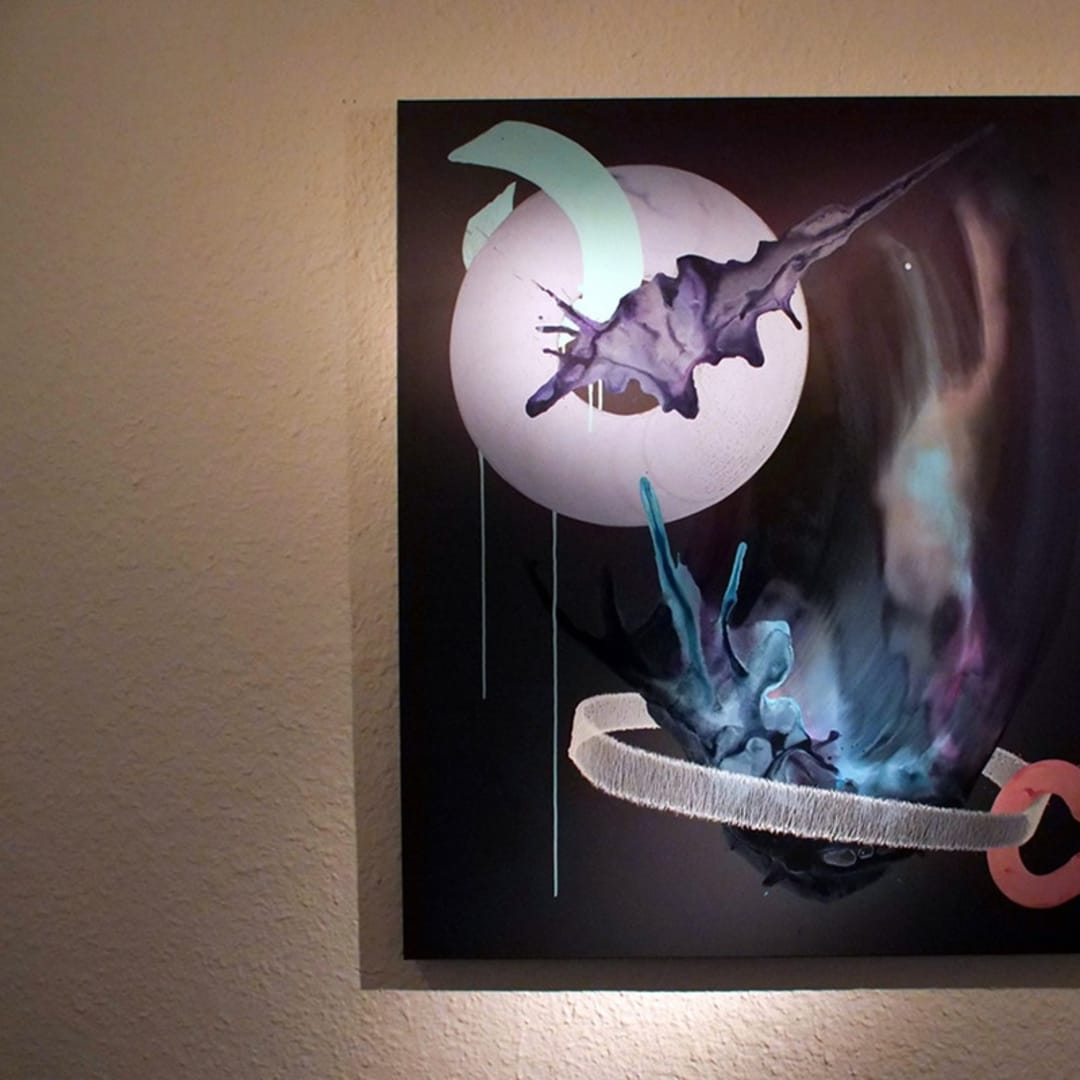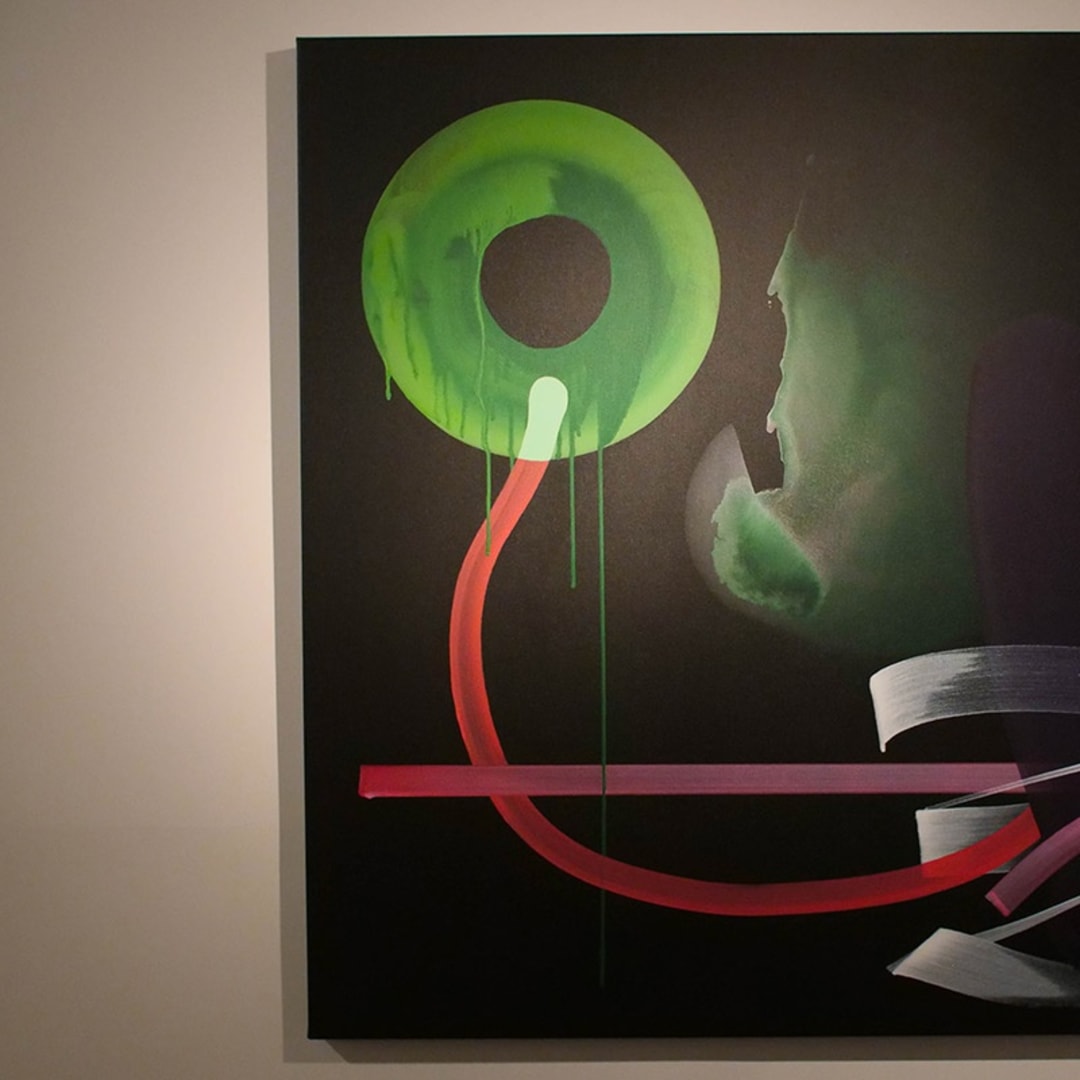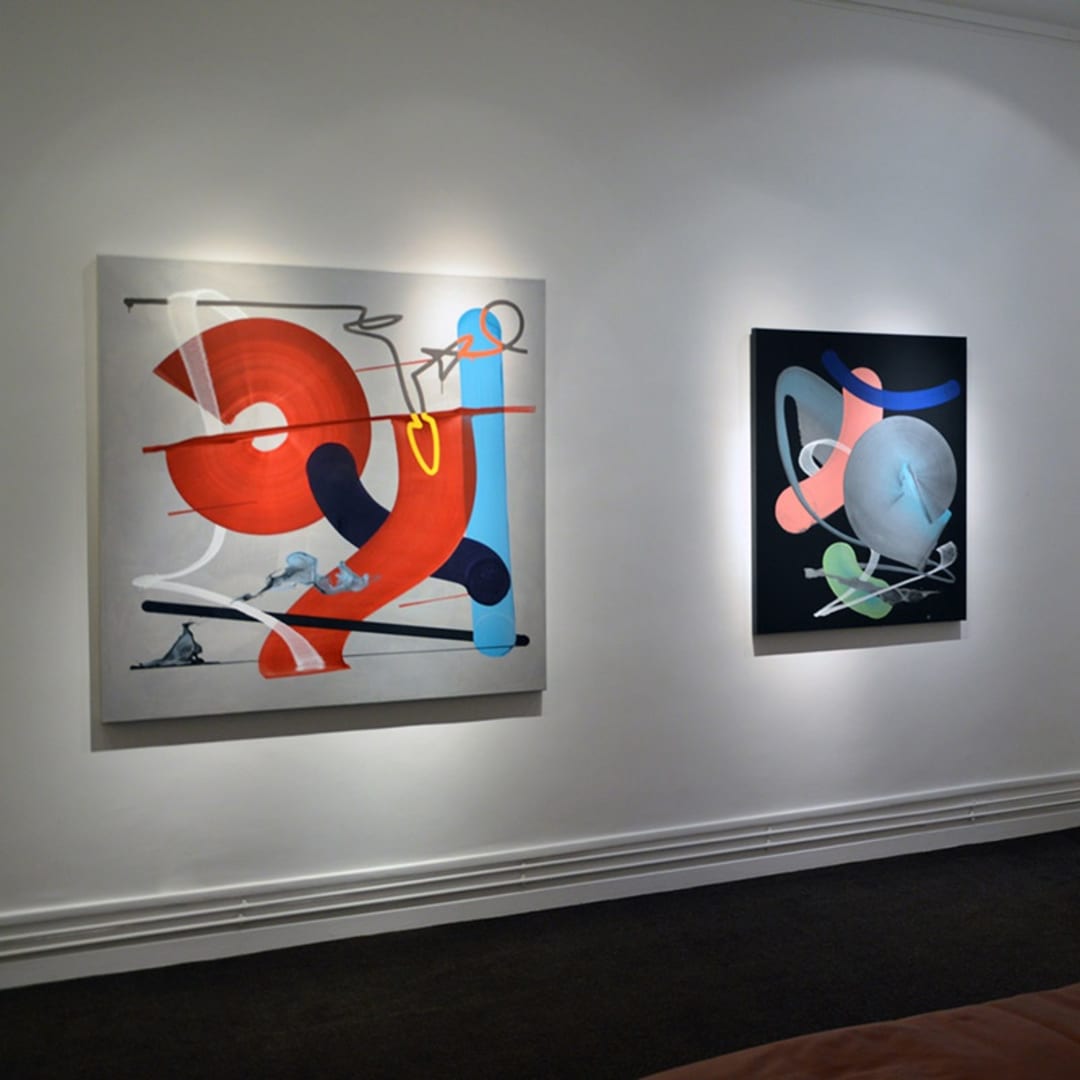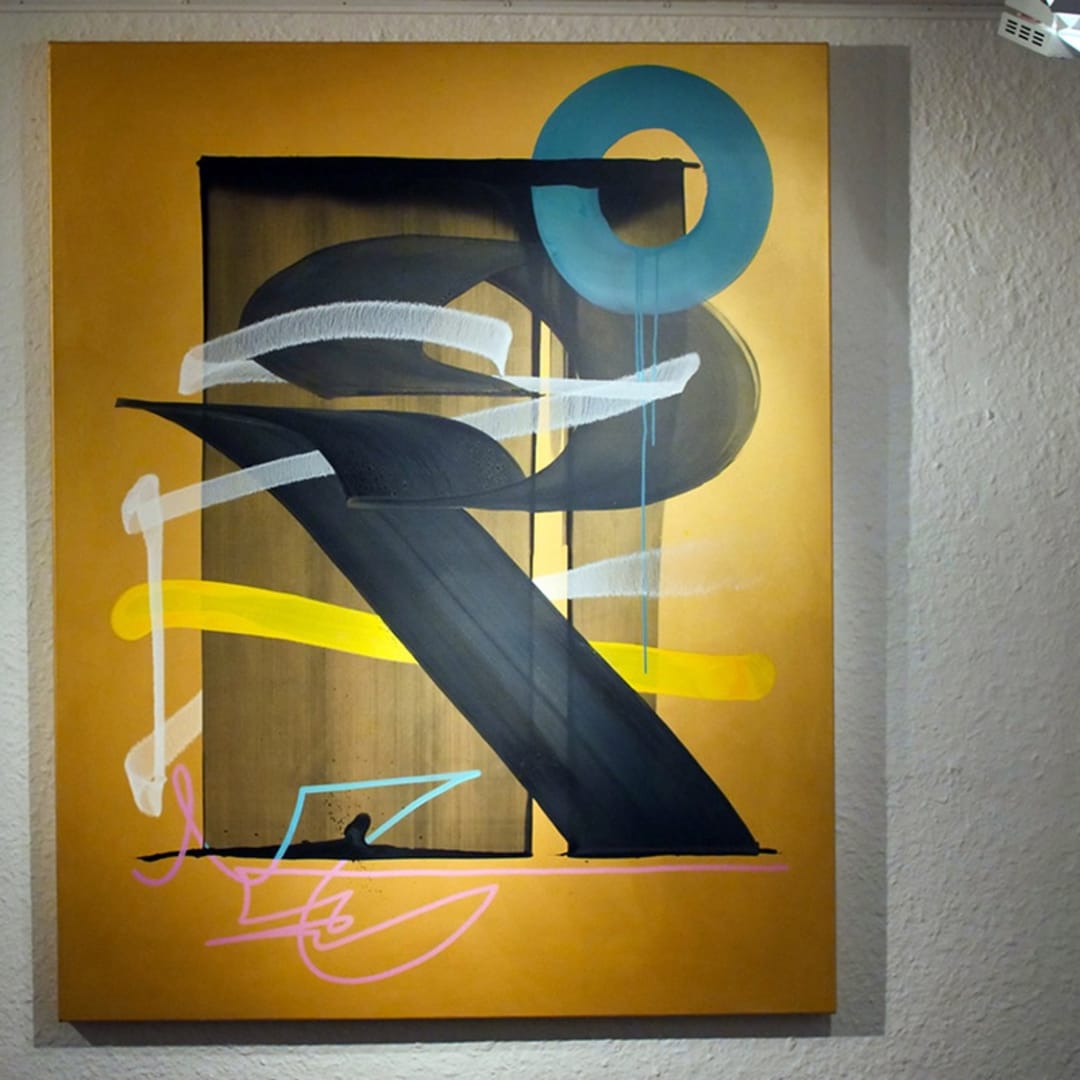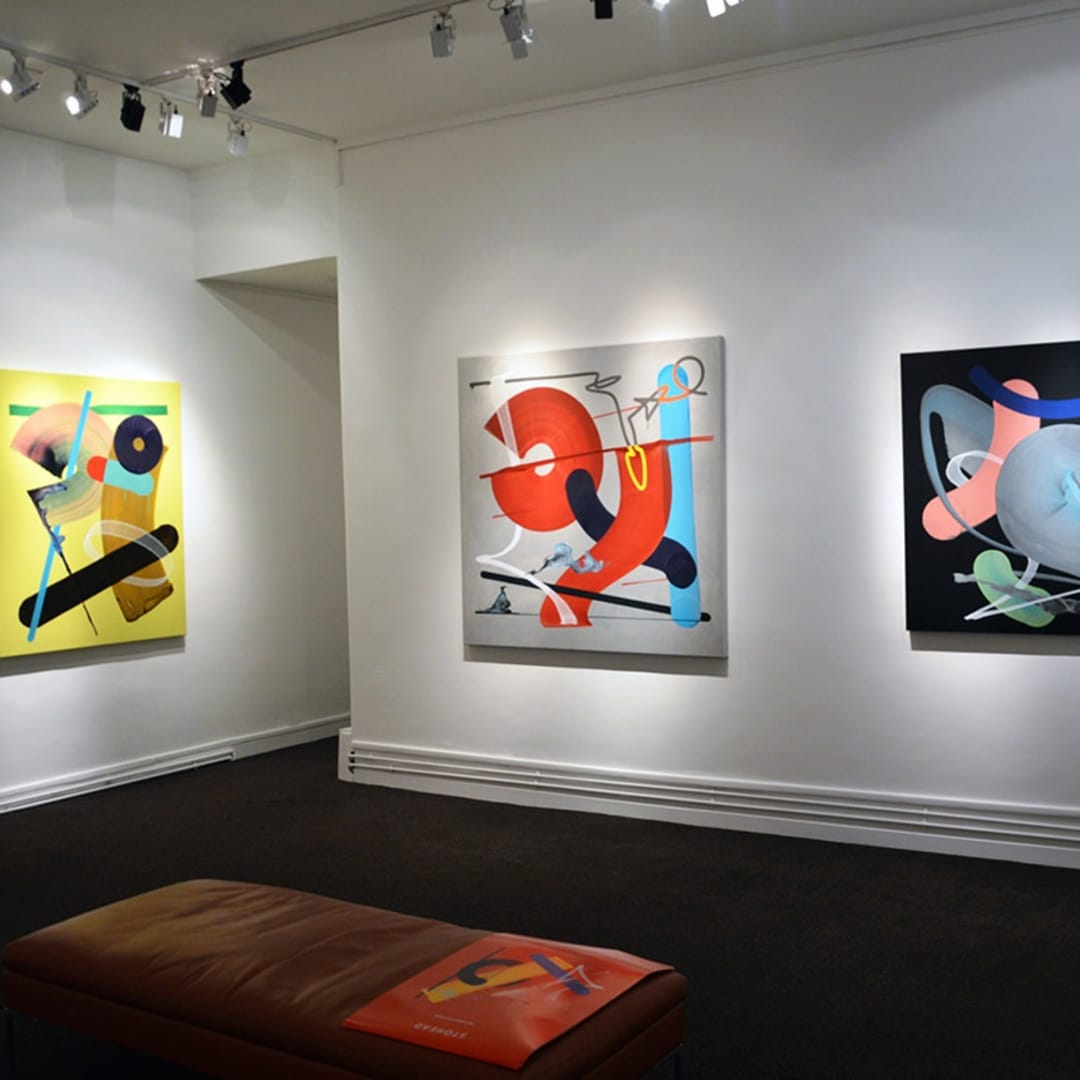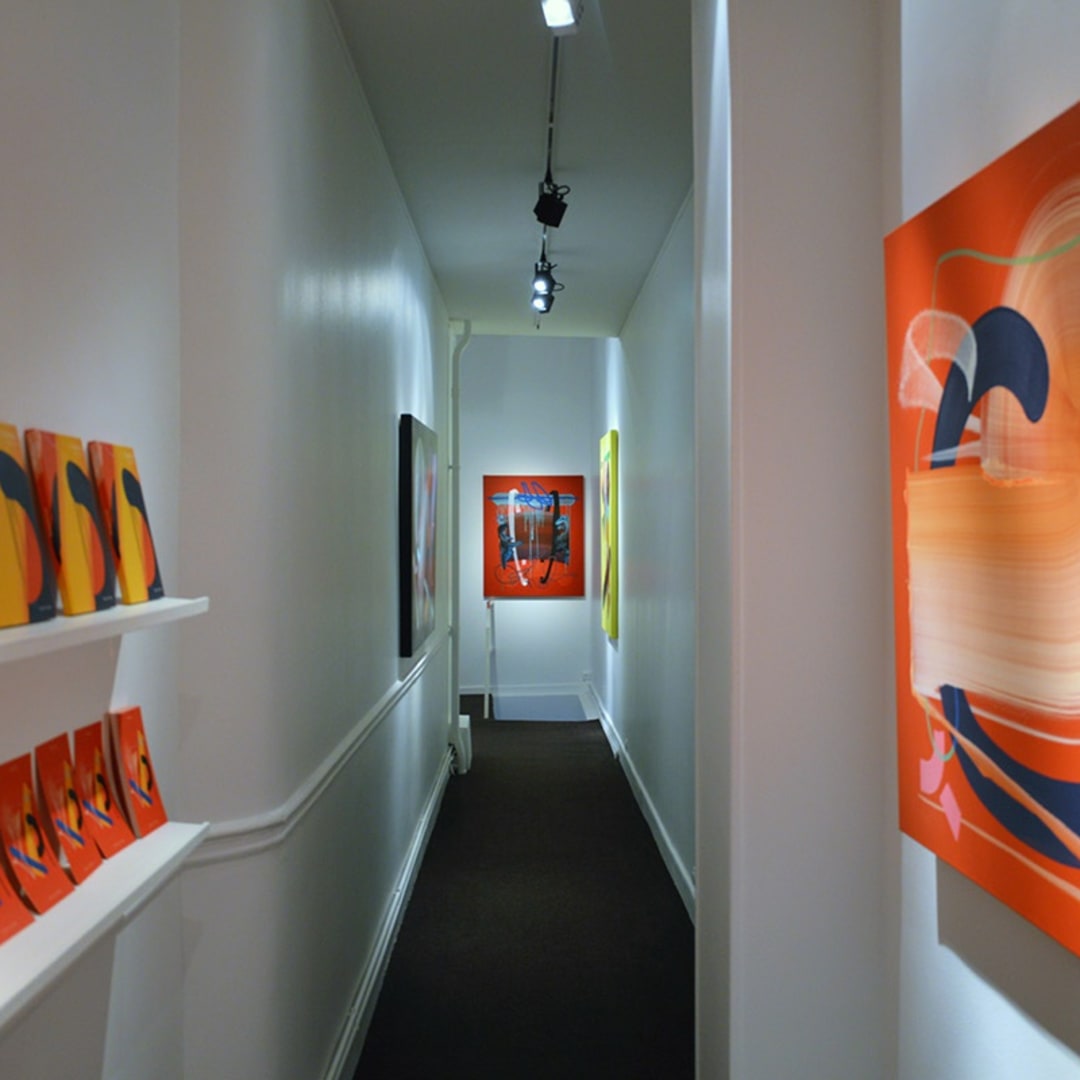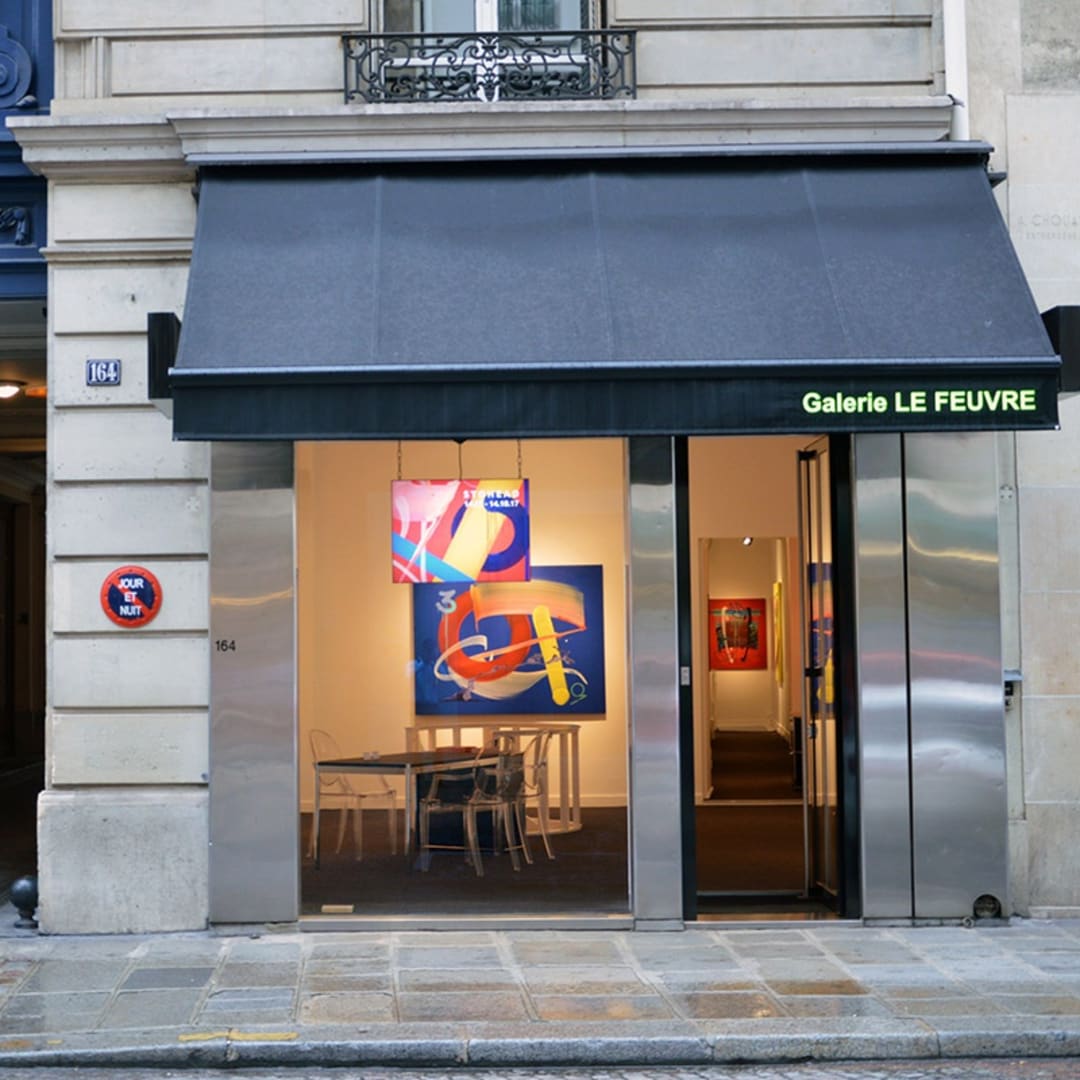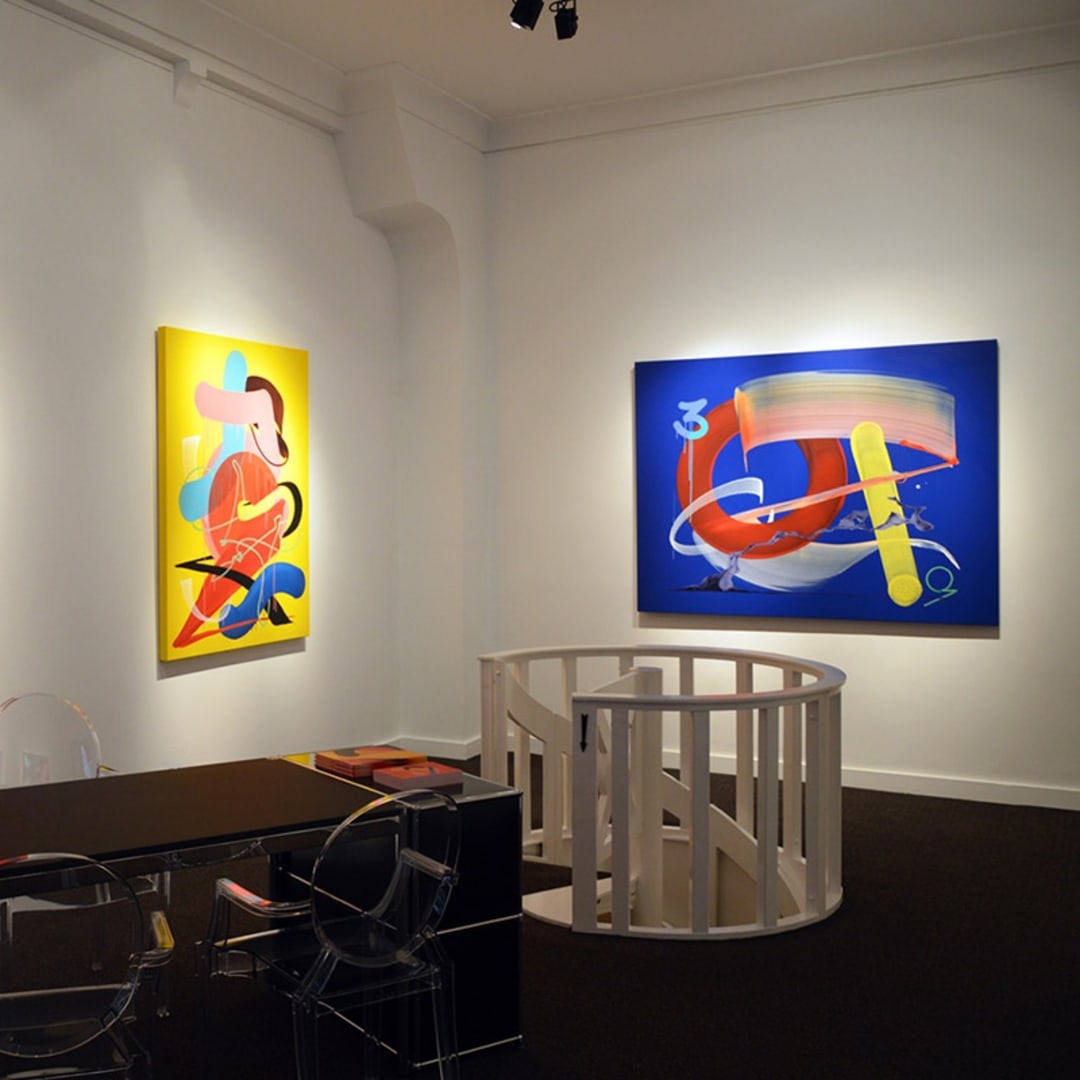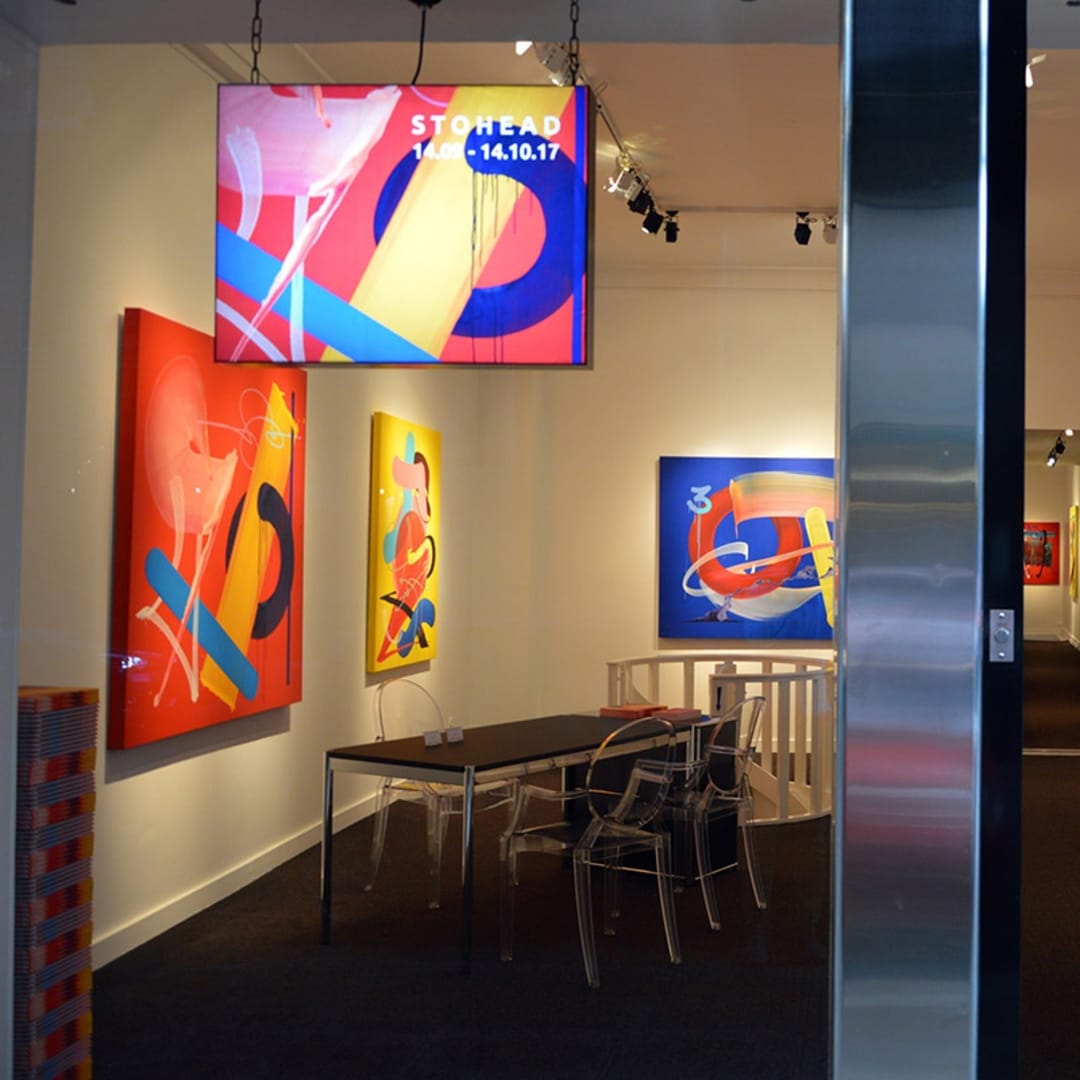→ Informations: info@lefeuvreroze.com
Stohead: "Recomposition"
Catalogued solo exhibition
14 September - 14 October 2017
Christoph Hässler aka Stohead has been represented by Le Feuvre & Roze gallery since 2012. Three solo exhibitions have been dedicated to him: We Love Stohead (2012), NOW (2014), and Recomposition (2017).
Christoph Hässler, aka Stohead, is one of those artists for whom painting is a constant search. When he discovered graffiti 27 years ago, he was seized by a particular dimension of this practice: writing. In other words, tagging, the calligraphic side of graffiti. The way of representating the letter with a line and linking the characters one after the other. And those in the know know: you can often tell a good graffiti artist by the way he tags. The inspiration, the movement, the energy, the coherence, all this makes the beauty of the tag, often unreadable, and whose creative dimension totally escapes the neophytes who only find graffiti artistic when it is pretty. Because yes, tagging can be aggressive? It is a signature quickly left on a corner of a wall that has no other purpose than to mark the passage of its author. And it is only addressed to its peers. The public is not invited to decipher it, nor to like it. This tag, however, often leads its followers to calligraphy. Fascinated by the multiple - infinite - possibilities of representing a single letter with one or more strokes, the tagger, by dint of technical research, can become a fine calligrapher. Just as a graffiti artist is not automatically a painter, a tagger is not necessarily a calligrapher. And without work, talent alone is not enough to become one. Stohead has understood and learnt all of this along the way. Never abandoning the tagger/graffiti artist in him, he quickly decided to transpose his calligraphic universe onto canvas, going so far as to share the paternity of the term "Calligraffiti" with another skilled graffiti artist: the Dutchman "Shoe". However, unlike Shoe - and unlike the majority of graffiti artists practising calligraphy on canvas - Stohead soon tired of the egocentric dimension of writing, preferring to drop onto his canvases pieces of phrases from songs, quotes from books or films. Sometimes even a single word could be represented on the work, written once or several times. 'Intoxication', 'Over Over Over', 'NOW', words which, depending on the environment in which they were placed, could give the work different meanings. In his early research, Stohead based his calligraphic work on the impact of the words, but also on the strong visual effect caused by the contrast between a plain, dark or coloured background and a sharp, lively, agitated writing, created by using completely different colours from the background. Warm and cold tones, black and white, very thick and dripping strokes executed with tools specially created by the artist, saturating a canvas with such a calm background with paint... Impact, always.
The impact was also discussed when, after much work, Stohead noticed that the floor of his studio was covered with stains resulting from the mixture of different colours and inks used in his calligraphic experiments. Initially photographed, these stains were eventually reproduced by the artist. Here, the research met the chance dimension to which every creator must one day adapt. By integrating them into his calligraphies, Stohead turned these stains into clouds of smoke, which eventually became the birthplaces or evanescence of his letters. Then, always in a spirit of research and because from the start he took nothing for granted or definitive, Stohead felt the need to come and split his clouds. Perhaps to add a source of balance. Perhaps to insert recognisable, tangible forms, which for him stabilise the compositions. For his work, from pure calligraphy, is a question of balance. Balance of the letters in their sequence on the canvas, suspended balance of the clouds, of the vapours, running through the work from one end to the other... Fragile balance of a composition mixing the lightness of evanescence with the rectitude of lines. Like the lines of a marker in a graph... playing with their clouds, these lines were reminiscent of the black structures of Tinguely's "useless modules", linking the elements to each other without being the main attractions of the composition. Little by little, Stohead led us back from Decomposition to Recomposition. Today, it is a question of bringing the elements together. Far from a mishmash of chaotic calligraphy, liquid or vaporous effects and broken lines, Stohead's main characteristic is the search for a new harmony ; a balance between his different works, all of which are present in the paintings that together make up the Recomposition. And paradoxically, it is simplicity that takes over here. The rapid gesture concretises, through simple forms in bright colours, hours - years - of reflection, waiting, looking at the canvas to find the right gesture. This is what Stohead offers us here.
